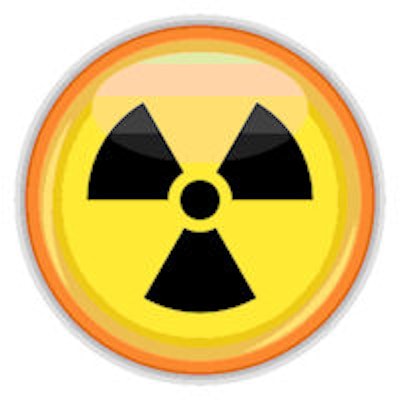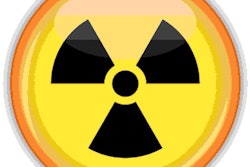
Radiologists who started practice after 1940 face no increased risk of mortality compared to other physicians who aren't exposed to radiation as part of their jobs, according to a large new study published July 19 in Radiology. The results are a credit to long-term efforts to reduce occupational radiation exposure, the researchers said.
In their study, researchers from the U.S. National Cancer Institute in Bethesda, MD, compared mortality data from radiologists to that of psychiatrists -- the latter because they are unlikely to experience job-related radiation exposure -- in a large cohort of 100,000 individuals.
The investigators considered mortality from all causes and specific causes and also total cancers and specific cancers, and they evaluated whether the mortality rates they observed were consistent with known risks of radiation exposure and changes in exposure over time. The results showed that radiologists not only avoided mortality associated with radiation risks, but had a better health profile overall than psychiatrists.
"Overall, radiologists had lower death rates from any cause compared to our unexposed comparison group, psychiatrists," wrote lead author Amy Berrington de González in an email to AuntMinnie.com. "The two professions had similar risks of cancer mortality overall."
Longer look needed
Mortality patterns in radiologists can contribute to a better understanding of the long-term effects of protracted low-level radiation, the study team wrote. Radiologists are unique in that they have generally good health compared with patient populations, but they are subject to long-term radiation exposures and at higher doses than other professions exposed to radiation, such as nuclear power workers.
Other studies have examined mortality rates in radiologists, but both were relatively small. A British cohort started with more than 2,700 radiologists registered with a radiologic society between 1907 and 1979, and researchers followed them through 1997. A U.S. study included 6,500 male radiologists who were followed initially between 1920 and 1969, with a final mortality follow-up ending in 1974.
In the current study, Berrington de González and colleagues Estelle Ntowe; Cari Kitahara, PhD; and others sought to compare mortality rates "from all causes, specific causes, total cancers, and specific cancers to assess whether differences between radiologists and psychiatrists are consistent with known risks of radiation exposure and the changes in radiation exposure to radiologists over time," the investigators wrote.
Using the American Medical Association (AMA) Physician Masterfile, they constructed a cohort of 43,763 radiologists (20% women) and 64,990 psychiatrists (27% women). Interventional radiologists were excluded from the current study; a separate analysis is being reviewed for publication later this year.
Both radiologists and psychiatrists in this cohort graduated between 1916 and 2006. Social Security Administration data and commercial databases provided vital statuses, and the cause of death was obtained from the National Death Index, the group wrote.
The study used Poisson regression analysis to estimate relative risks (RRs) and 95% confidence intervals (CIs) for all causes and specific causes of death for radiologists versus psychiatrists. Analyses were adjusted for 95% confidence intervals, causes of death, sex, year of birth, and attained ages in five-year groups. During the follow-up period of 1979 to 2008, 4,260 male radiologists and 7,815 male psychiatrists died.
Radiologists live longer
Death rates from all causes were lower among radiologists versus psychiatrists (RR = 0.94). The two professional groups had similar cancer death rates overall (RR = 1.00), but increased acute myeloid leukemia and/or myelodysplastic syndrome death rates (RR = 1.62). The higher rates for these diseases were driven by those who graduated before 1940 (RR = 4.68).
The numbers indicated that the relative mortality risk for radiologists fell as time went on.
| Relative risk of mortality for radiologists vs. psychiatrists, by age cohort | ||||
| Pre-1940 | 1940-1959 | 1960-1979 | 1980+ | |
| All-cause mortality | 0.96 | 0.98 | 0.87 | 0.66 |
| Cancer mortality | 1.12 | 0.99 | 0.96 | 0.96 |
| Digestive organs | 1.12 | 0.92 | 1.02 | 0.97 |
| Lung and bronchus | 0.84 | 1.04 | 1.06 | 0.70 |
| Skin cancer | 6.38 | 1.29 | 0.67 | 0.31 |
The risk of death increased for all lymphomas in the earliest radiologists (RR = 2.24) owing to an increased risk of death from non-Hodgkin's lymphoma (RR = 2.69). There were no significantly increased risks of cancer mortality in those who graduated after 1940 for all solid cancers, hematologic malignancies, or site-specific solid cancers.
Among the doctors graduating before 1940, the investigators also found increased death rates from melanoma (RR = 8.75) and cerebrovascular disease (RR = 1.49). Interestingly, no previous studies of radiology cohorts have shown an increase in cerebrovascular risk, although there were 17 cases among atomic bomb survivors, the authors noted.
Also, the link between radiation exposure and melanoma has not been established definitely. Only a previous study of technologists showed an uptick in melanoma, and then only among those practicing before 1950.
Similarly, non-Hodgkin's lymphoma is not classified as a radiation-inducible cancer because of the inconsistent findings across studies, the authors wrote. There is a weak relationship between radiation dose response for non-Hodgkin's lymphoma among male atomic bomb survivors but not for female survivors, and an excess was observed in the U.K. radiologists -- although the numbers were small, with nine cases, they wrote.
There were only 208 deaths among female radiologists, precluding further investigation of women as a group. And only 47 female radiologists graduated before 1940, the authors wrote.
Radiologists had a lower risk of death from all causes except for a higher risk of acute myeloid leukemia and/or myelodysplastic syndrome, melanoma, and non-Hodgkin's lymphoma among those who graduated before 1940 -- "when radiation exposures would have been the highest," the team wrote.
Of note, a 1975 study looked at mortality in a cohort of radiologists who joined the RSNA between 1920 and 1969, also finding excess mortality rates for radiation-related cancers, but the effects were seen only among radiologists who joined the RSNA before 1940. But in this study, follow-up was limited for those who joined after 1940.
Largest to date
Among the current study's strengths, the authors cited its large population size and using for comparison a group of physicians who were unlikely to have been exposed to radiation.
"Our long-term follow-up of radiologists who graduated before 1940 provides an assessment of risks several decades after first exposure," they wrote. "We also had systematic follow-up through a large number of tracing sources, with a sensitivity analysis that excluded large follow-up biases."
On the downside, there was no way to determine whether physicians in the study were still practicing or anything about lifestyle factors, they wrote. The lower rate of chronic obstructive pulmonary disease among radiologists suggested they smoked less than the psychiatrists.
In a much larger cohort with longer follow-up than previous studies, this study confirmed that excess mortality among U.S. radiologists is mostly confined to those who worked before 1940, the group concluded.
"Among radiologists who graduated from medical school prior to 1940, we observed higher rates of death from leukemia and/or myelodysplastic syndrome, which was likely related to their occupational radiation exposure," Berrington de González wrote in her email. "Radiologists who graduated pre-1940 also had an increased risk death from stroke, which could be related to their exposure."
In the end, the new findings are a testament to the efforts to control radiation exposure in the workplace for diagnostic radiologists.
"Our findings indicate that current safety practices for medical radiation workers are successful in controlling exposures so as to minimize cancer risks," Berrington de González wrote. "There are some specialist groups, however, where exposure has been increasing, including cardiologists and nuclear medicine techs. Further study of these is necessary."




















